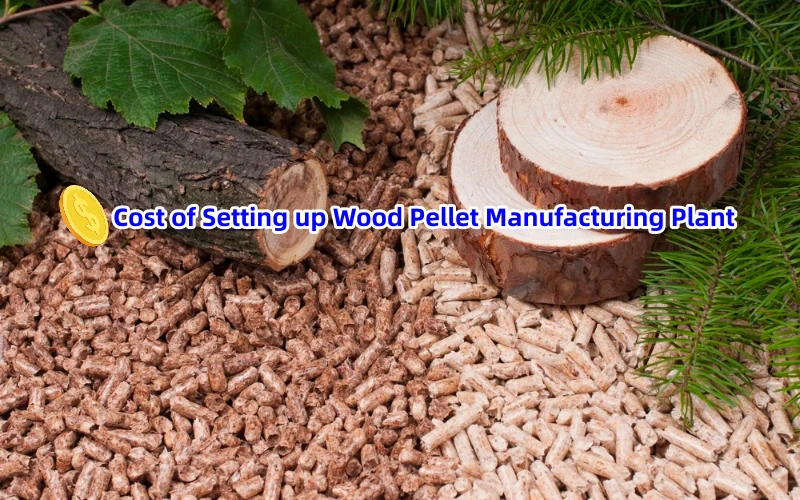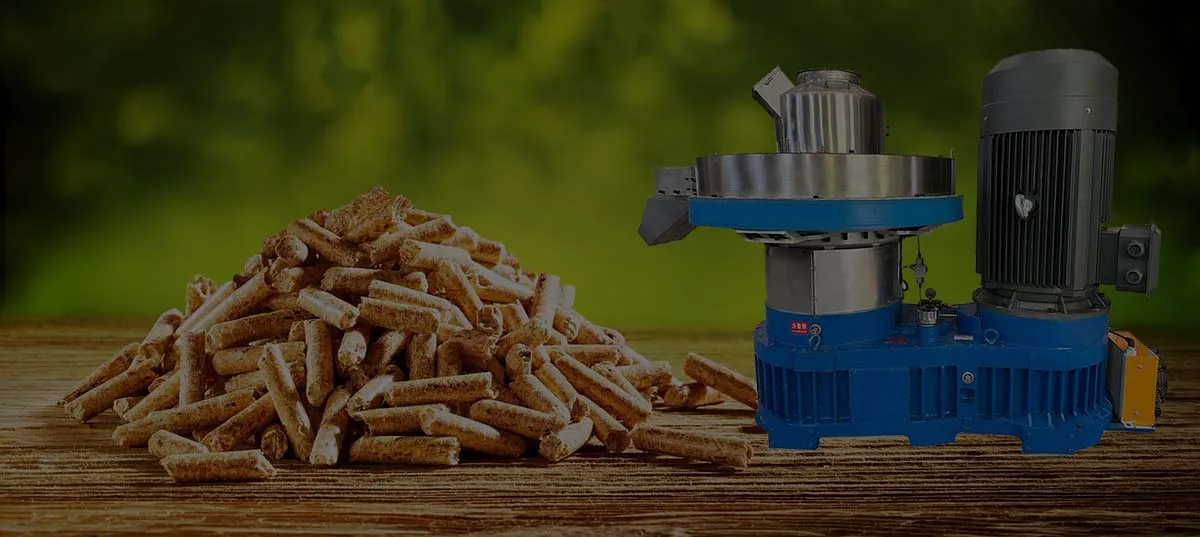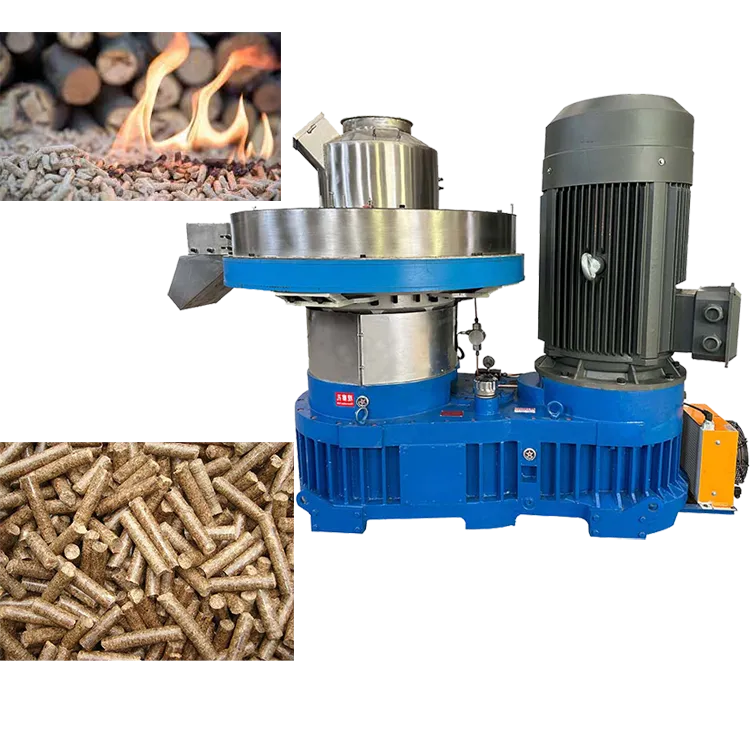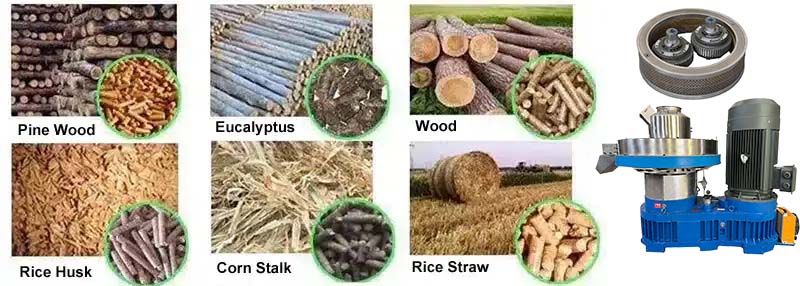
Cost of Setting up Wood Pellet Manufacturers in 2023
The importance of wood pellet manufacturers can never be denied, especially in this era when there is a need for sustainable and renewable energy resources.
On one side the establishment of the wood pellet manufacturing plant is environmentally friendly while on the other side it can also perfectly meet the growing needs for eco-friendly energy resources.
This article is going to be a comprehensive guide about the course associated with the establishment of wood pellet manufacturers. The knowledge of costs will help you decide whether or not you should proceed with the process and if it fits your budget.

The Global Market Development Trend for Wood Pellet in 2023
The global wood pellets market size was estimated at USD 8.23 billion in 2021 and is expected to reach USD 27.52 Billion by 2029.
As we have already discussed that the trend for a wood pellet manufacturers establishment is increasing and it deserves to increase. People are becoming more and more aware of the importance of environmentally friendly energy resources.
The best part is that the wood pellet manufacturing plants are great alternatives to fossil fuels and provide energy that creates no pollution. Even the future of this industry is also bright and various experts see it as something every country’s government should seriously consider.
If the government regulations and laws are lenient towards the establishment of wood pellet manufacturers, it can be a very positive step towards a pollution-free globe.
Increasing Need for Alternative Sources of Energy
The first most important thing that is supporting the establishment of these plants is the rising need for various sources of energy that create least pollution. Fossil fuels are negative from all aspects. They not only create a lot of pollution but also deplete.
The increasing concern over climate change and the diminishing reserves of fossil fuels have led to a surge in the demand for renewable energy sources, consequently causing a rise in the prices of conventional energy sources[1].
Utilizing biomass resources like sawdust, wood chips, and agricultural leftovers, wood pellets offer a sustainable and carbon emission-free solution for generating heat and electricity.
This eco-friendly alternative presents a viable option for producing energy. Due to this outcome, countries worldwide are increasingly adopting wood pellets as a viable alternative to traditional fossil fuels.
Policies and incentives offered by the government that are to one’s advantage
It is encouraging to note that different nations of the world have shown a positive attitude and supportive laws towards the establishment of wood palette businesses.
So anyone who wants to establish such a business needs to pay special attention to the incense that their government offers. In this way they may be able to enjoy various subsidies and tax credits.
If you look at what will happen in the near future if the governments continue to provide a lenient and supportive environment, we can note that it will result in market expansion.
It will enhance the economic position and investors and business owners will attract towards this business idea. As a result the industry of manufacturing wood palette’s will continue to grow in the upcoming deserts[2].
Increasing Our Reliance on Energy Derived From Biomass
The versatility of this idea is evident as it is an eco-friendly energy source and is better than fossil fuels. One of the most common applications is in residential buildings, where they are used for heating purposes.
They are also utilized in the creation of electrical power, providing a sustainable and renewable energy source. Wood pellets are widely used in industrial settings, where they serve multiple purposes. Their popularity stems from their efficiency and eco-friendly nature, making them a preferred choice in many different sectors.
The utilization of energy obtained from biomass is experiencing a steady increase as countries transition towards the adoption of more environmentally friendly energy sources.
Wood pellets offer numerous advantages, such as their impressive energy density, convenient transportability and storage, and consistent combustion properties. There are several factors contributing to the growing popularity of wood pellets as a reliable and eco-friendly option for generating electricity.
Trade Between Developing Countries and Emerging Markets
Not only China, Japan, South Korea, Canada and nations of Europe are involved in expansion of wood pellet market but every nation including Asian nations and the world’s superpower United States is also focusing on it.
It would be right to say that this market has expanded beyond the regional borders and now the whole world is focusing on this amazing energy resource that carries no pollution. The developed countries possess abundant biomass resources, which contribute to their dominant position in this industry.
On the other hand, there has been a noticeable increase in the utilization of wood pellets in developing Asian nations such as China, Japan, and South Korea. The rise in demand for renewable energy is fueling this growth[3].
The wood pellet industry is now presented with exciting opportunities to tap into the growing global demand, thanks to the expansion of international trade and market potential.
The Development of New Technologies and Innovative Methods
With the advancement of technology the wood pellet sector is observing a lot of development. The inclusion of the latest technology in the process of establishing wood pellet manufacturing plants has further enhanced the growth process.
Now we are seeing that the world is changing at a very fast pace and the manufacturers are investing their resources in researching the benefits of establishing the wood pellet manufacturers.
They are also observing how they can make the wood pellet production process more useful and how the implementation of various latest techniques can affect this process, aiming to boost efficiency, reduce production costs, and enhance the product’s environmental impact.

Wood Pellet Manufacturers: Size and Capacity
When constructing a plant for the production of wood pellets, one of the most important considerations to make is selecting the proper plant size and capacity. The yearly output capacity of a plant is frequently used as a measurement of its size; this capacity is typically stated in tons.
Wood pellet mills can range in size from small-scale facilities producing a few thousand tons yearly to huge industrial plants with capacity surpassing hundreds of thousands of tons, depending on the scope of operations and the demand in the market.
The total cost of maintaining a certain plant size depends on a number of factors. The initial investment for a smaller plant may be lower, but it may only have a limited capacity for output.
On the other hand, larger plants may be able to accept higher production volumes, but they may demand a higher initial investment. Before completing the plant size and capacity, it is imperative to do an in-depth analysis of the projected demand in the market as well as the available financial resources.
Wood Pellet Equipment Costs
When it comes to determining how much it will cost to build a factory from the ground up, one of the most important factors to consider is the machinery and methods that will be used in the manufacturing of wood pellets that costs $3-4 million.
The production of pellets calls for the use of a wide range of specialized pieces of equipment, such as machines for producing wood pellets, hammer mills, dryers, coolers, conveyors, and packaging machines.
The costs that are associated with these various pieces of equipment could alter based on the quality, efficiency, and capacity of the individual pieces of equipment itself.
TCPEL is widely regarded as the industry’s preeminent provider of pellet producers with solutions that are superior in both quality and value, namely in the realm of wood pellet machines.
TCPEL is pleased to provide a wide selection of wood pellet machines, including feed pellet machines, which are characterized by their exceptional performance as well as their structure that is designed to survive for a very long time.
When companies choose for the wood pellet machines offered by TCPEL, they are able to take advantage of the company’s competitive pricing as well as its exceptional quality, optimizing their production efficiency and ensuring their reliability over the long term.
Wood Pellet Manufacturers: Raw Material Costs
A plant that makes wood pellets has a number of significant factors that determine the degree to which it is profitable. Two of these major variables are the availability of raw materials and the price of those commodities.
In the manufacturing of wood pellets, examples of biomass resources that are often employed include sawdust, wood chips, and agricultural leftovers.
Recycled wood or natural fibers can be used as the primary ingredient in the production of wood pellets. The price of recycled wood is from $55 to 65 dollars per tonne, which is significantly lower than the price of native fibers, which is $70 to 80 dollars per tonne[4].
There are a number of factors that may considerably impact the costs connected with acquiring these raw materials. These factors include the geographic location of the business, the conditions of the local market, and the fees associated with transportation.
In order to bring down the cost of raw materials, it is very necessary to forge strategic partnerships with various suppliers. In addition, it is essential to do research into the availability of more cost-effective procurement methods and to work toward improving existing logistical arrangements.
In addition, it may be possible to reduce the cost of raw materials by putting in place efficient waste management systems and making use of by-products from the forestry and agricultural sectors. Both of these businesses produce a wide variety of by-products.

Wood Pellet Manufacturers: Operational Costs
The operating costs required is $42.34 per ton. The operation of a plant that makes wood pellets has a number of continuing expenditures, all of which need to be accounted for in the cost analysis of the overall project in order to provide an accurate picture of the total cost.
In most cases, operational expenses comprise not only the wages of employees but also the cost of maintenance and repair work, the cost of utilities such as electricity and water, as well as any other incidental expenditures.
It is very necessary for these expenditures to be effectively managed in order to ensure that the plant will continue to be profitable and viable over the course of the long term.
The installation of tight maintenance practices, the investment in technologies that are energy efficient, and the optimization of production processes are all things that may aid in the reduction of operating expenditures.
At the production plant that creates wood pellets, it is important to conduct periodic assessments and study various choices for cost-saving measures. It is important that this be done without compromising the quality or productivity of the plant.
Licensing and Regulatory Compliance Costs
The big challenge that can come in the way of wood pellet manufacturers establishment is the strict licensing and regulatory compliance costs. Although various countries are trying to reduce the costs, the process of acquiring the necessary licenses and certifications is not that easy.
The costs that are involved with getting permits and following laws may vary greatly from one jurisdiction to another, depending on the specific limitations that are imposed by local authorities in each of those jurisdictions.
It is vital to have a full awareness of the environmental and safety standards that control the wood pellet industry in order to avoid the possibility of incurring penalties or having operations interrupted. In addition, it is essential to comply with the requirements that have been set down[5].
If you are not sure what the exact cost of establishing a wood pellet manufacturing plant in your local area is, it is better to reach out to the local experts and consultants who are well equipped with the knowledge of the laws and the rules and regulations.
Their expertise and experience may be of assistance in navigating the complicated landscape of permits and compliance, so ensuring that the manufacturing plant for wood pellets complies with all of the applicable criteria.
Conclusion
The rising trend of establishment of wood pellet manufacturers in 2023 shows that the wood pellet industry will grow at a very fast pace. The best part about woodpelled manufacturing plants is that it is eco-friendly and environmentally friendly and does not create any pollution.
Due to this reason it is a very great alternative to fossil fuels that not only deplete but also create noise and air pollution.
As you embark on your wood pellet manufacturing journey, consider TCPEL as your reliable partner. TCPEL offers top-of-the-line wood pellet machines and services, including feed pellet machines, known for their superior quality and competitive pricing.
To learn more about TCPEL’s offerings, visit its website and explore its range of pellet machines and feed pellet machines. Take the first step towards establishing a thriving wood pellet manufacturing plant with TCPEL’s trusted expertise and cutting-edge solutions.
Talk to An Expert
SHARE THIS POST
Talk to An Expert
